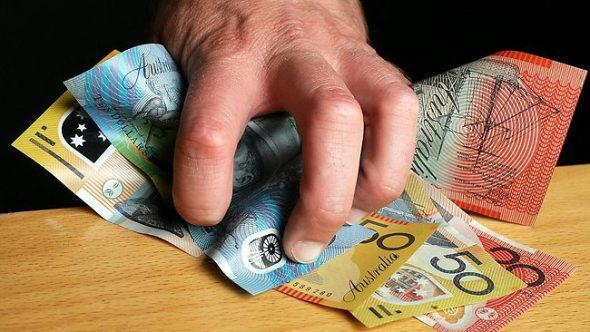Russia’s invasion of Ukraine has delivered Australia’s coal exporters windfall profits of up to $45 billion, with gas exporters reaping almost as much, a new report has shown.
The Australia Institute report, dubbed From Russia With Love, reveals Australian coal export revenue reached $112 billion in 2021-22, up 186 per cent year-on-year.
Export windfall profits were between $39 billion and $45 billion, of which between $13-23 billion is directly attributable to the Russian invasion of Ukraine, TAI says.
Gas exporters saw export windfall profits of between $26 billion and $40 billion. Combined, the gas and coal export sectors have received an extra profit windfall of up to $85 billion.
A windfall profits tax could collect 100% of this revenue and be used to transition away from coal and gas, while supporting consumers to deal with high prices, TAI says.

The report comes just as the federal government proposes to cap for 12 months the price of gas at $12 a gigajoule and the price of coal to $125 a tonne in NSW and Queensland.
“Those profits serve no point, they don’t incentivise new production or new technology as everyone knows this is a temporary windfall driven by a war, in an industry that we need to be closing down,” TAI research director Rod Campbell told RenewEconomy.
“There will be modest increases in royalties and hopefully company tax payments for the commonwealth and states. But the outcome is everyone is making money from coal so there is an incentive to keep doing that, despite its problems.”
The export profits come just as Australian consumers are paying sky high prices for electricity and gas.
“Coal companies have also been making a killing while households and businesses are slugged with surging prices for Australian energy,” says TAI director Richard Denniss.
“A windfall profits tax could collect almost 100 per cent of this money for the public. This money could be being used to assist low/middle-income Australians with cost of living, and help transition our economy to cheaper, cleaner energy.”

The overall impact of high international prices for coal and gas within the National Energy Market (NEM) down to a consumer level is unknown, because of the confidential contracts generators have with fuel suppliers.
“The best we know is Eraring in particular is exposed to international coal prices in some way. And they’re paying a premium to $125. It does matter that even one generator has this exposure and it matters that a very big generator has an exposure because they are influential in setting prices in the wholesale electricity market,” Victoria Energy Policy Centre director Bruce Mountain told RenewEconomy.
Within the wholesale market the most expensive generator sets the price for the other participants, which can have “this massively leverage effect across the whole market”, Mountain says.
Spot prices then feed into the contract market and price rises felt by a small number of influential generators suddenly have an outsized effect throughout the NEM.
Funding the new NEM
Taxing the war-profits on gas and coal exports could fund the modernisation of the NEM, The Australia Institute report suggests.
“If Queensland’s [royalty] rates were slightly uplifted at rates that only target the windfall price component, the state could have raised an additional $19 billion in 2020-21. For context, this alone could have almost funded the Australian Government’s entire $20
billion investment in its Rewiring the Nation initiative to modernise Australia’s electricity grid,” the report says.
Coal companies receive some 60 per cent of the windfall benefit with the remainder shared between governments.
Economists are calling for those gains to be taxed but, after the anti-resource super profits tax campaign by iron ore companies brought down then Prime Minister Kevin Rudd in 2012, governments have been reluctant to tread this path.
The report notes small changes the Queensland Government has made to its royalty rates that now includes a top marginal rate of 40 per cent appears impressive, this applies only to prices above $350 per tonne. Average royalty rates remain low at just 28 percent. At traditionally high prices such as $200 per tonne, an average rate of only 11 percent applies.










